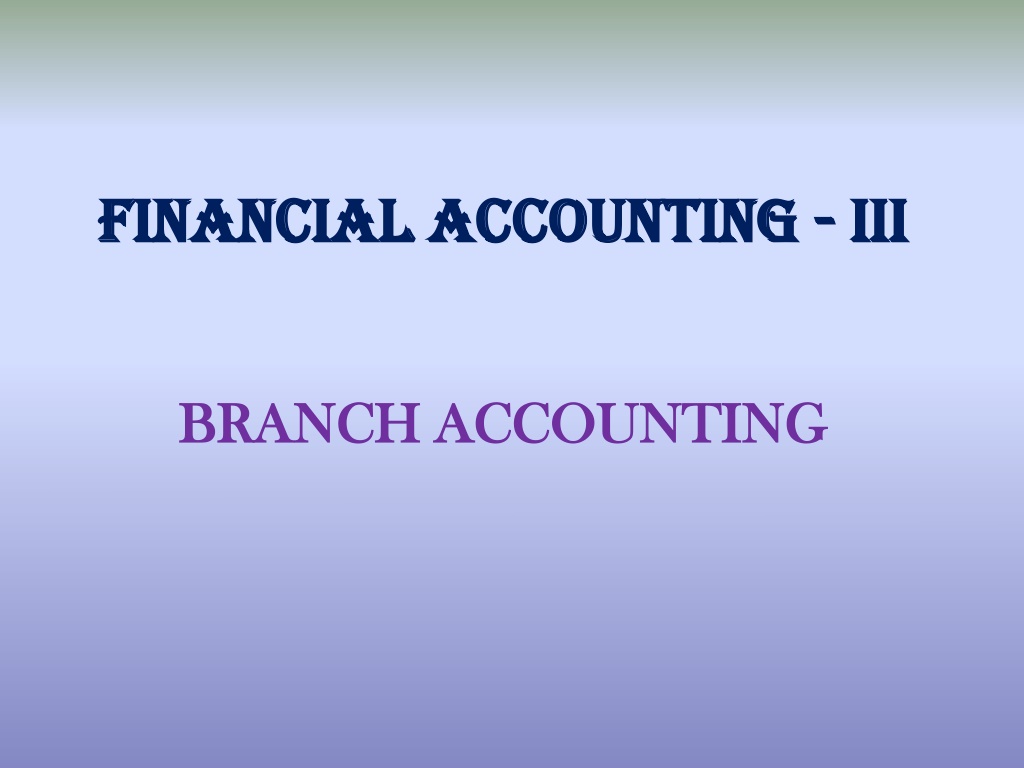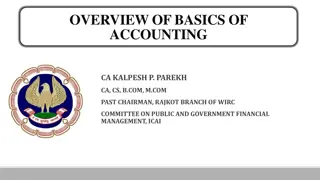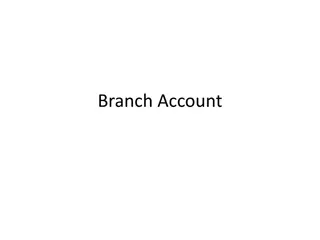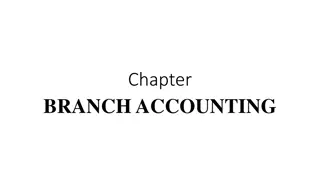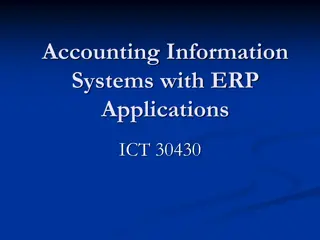What Is Branch Accounting System
Branch accounting involves maintaining separate accounts for each branch or operating location of an organization. It allows for transparency in transactions and financial positions. Learn how branch accounting works, its methods, applications, and historical roots.
Download Presentation

Please find below an Image/Link to download the presentation.
The content on the website is provided AS IS for your information and personal use only. It may not be sold, licensed, or shared on other websites without obtaining consent from the author.If you encounter any issues during the download, it is possible that the publisher has removed the file from their server.
You are allowed to download the files provided on this website for personal or commercial use, subject to the condition that they are used lawfully. All files are the property of their respective owners.
The content on the website is provided AS IS for your information and personal use only. It may not be sold, licensed, or shared on other websites without obtaining consent from the author.
E N D
Presentation Transcript
FINANCIAL ACCOUNTING FINANCIAL ACCOUNTING - - III III BRANCH ACCOUNTING BRANCH ACCOUNTING
What Is Branch Accounting? Branch accounting is a bookkeeping system in which separate accounts are maintained for each branch or operating location of an organization. Typically found in geographically dispersed corporations, multinationals, and chain operators, it allows for greater transparency in the transactions, cash flows, and overall financial position and performance of each branch. Branch accounts can also refer to records individually produced to show the performance of different locations, with the accounting records actually maintained at the corporate headquarters.
How Branch Accounting Works In branch accounting, each branch (defined as a geographically separate operating unit) is treated as an individual profit or cost center. Its branch has its own account. In that account, it records such items as inventory, accounts receivable, wages, equipment, expenses such as rent and insurance, and petty cash. Like any double-entry bookkeeping system, the ledger keeps a tally of assets and liabilities, debits and credits, and ultimately, profits and losses for a set period. Technically speaking, in bookkeeping terms, the branch account is a temporary or nominal ledger account. It lasts for a designated accounting period. At the period's end, the branch tallies up its figures and arrives at ending balances, which are then transferred to the appropriate head office or head department accounts. The branch account is left with a zero balance until the accounting process begins all over again with the next accounting period or cycle.
Branch Accounting Methods There are several different methods for keeping branch accounts, depending on the nature and complexity of the business and the operational autonomy of the branch. The most common include: Debtor system Income statement system Stock and debtor system Final accounts system
Where Branch Accounting Applies Branch accounting can also be used for a company's operating divisions, which usually have more autonomy than branches, as long as the division is not set up legally as a subsidiary company. A branch is not a separate legal entity, although it can (somewhat confusingly) be referred to as an "independent branch" because it keeps its own accounting books. However, branch accounting is not the same as departmental accounting. Departments may have their own accounts, but they usually operate from the same physical location. A branch, by its nature, is a geographically separate entity.
History of Branch Accounting Though it seems synonymous with contemporary chain stores and franchise operations, branch accounting actually goes back a long way. Venetian banks maintained a form of it as early as the 14th century. The ledgers of a firm of Venetian merchants, dating from around 1410, also show a form of it to try to account for overseas and home accounts. Luca Pacioli's Summa de Arithmetica (1494), the first accounting textbook, devotes a chapter to it. By the 17th century, branch accounting was being widely used by German counting-houses and other businesses. Moravian settlements throughout the thirteen original colonies used it for their books in the mid-1700s.
Advantages and Disadvantages of Branch Accounting The primary advantages (and often, the objectives) of branch accounting are better accountability and control since the profitability and efficiency of different locations can be closely tracked. On the downside, branch accounting may involve added expenses for an organization in terms of manpower, working hours, and infrastructure. A separate account coding structure must be maintained for each operating unit. It may be necessary to appoint branch accountants to ensure accurate financial reporting and compliance with head office procedures and processes.
THANK YOU THANK YOU K.M. SHIBHATHULLAH K.M. SHIBHATHULLAH PG DEPT. OF COMMERCE WITH (CA) PG DEPT. OF COMMERCE WITH (CA)
